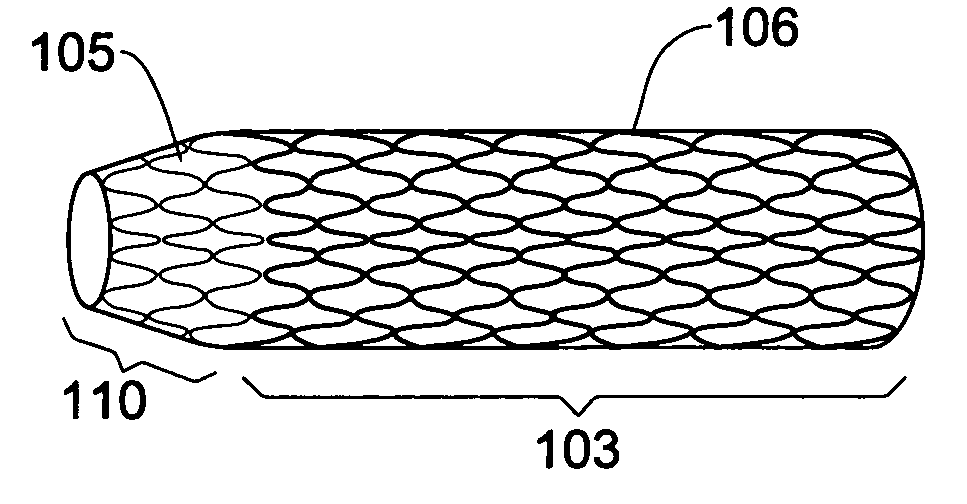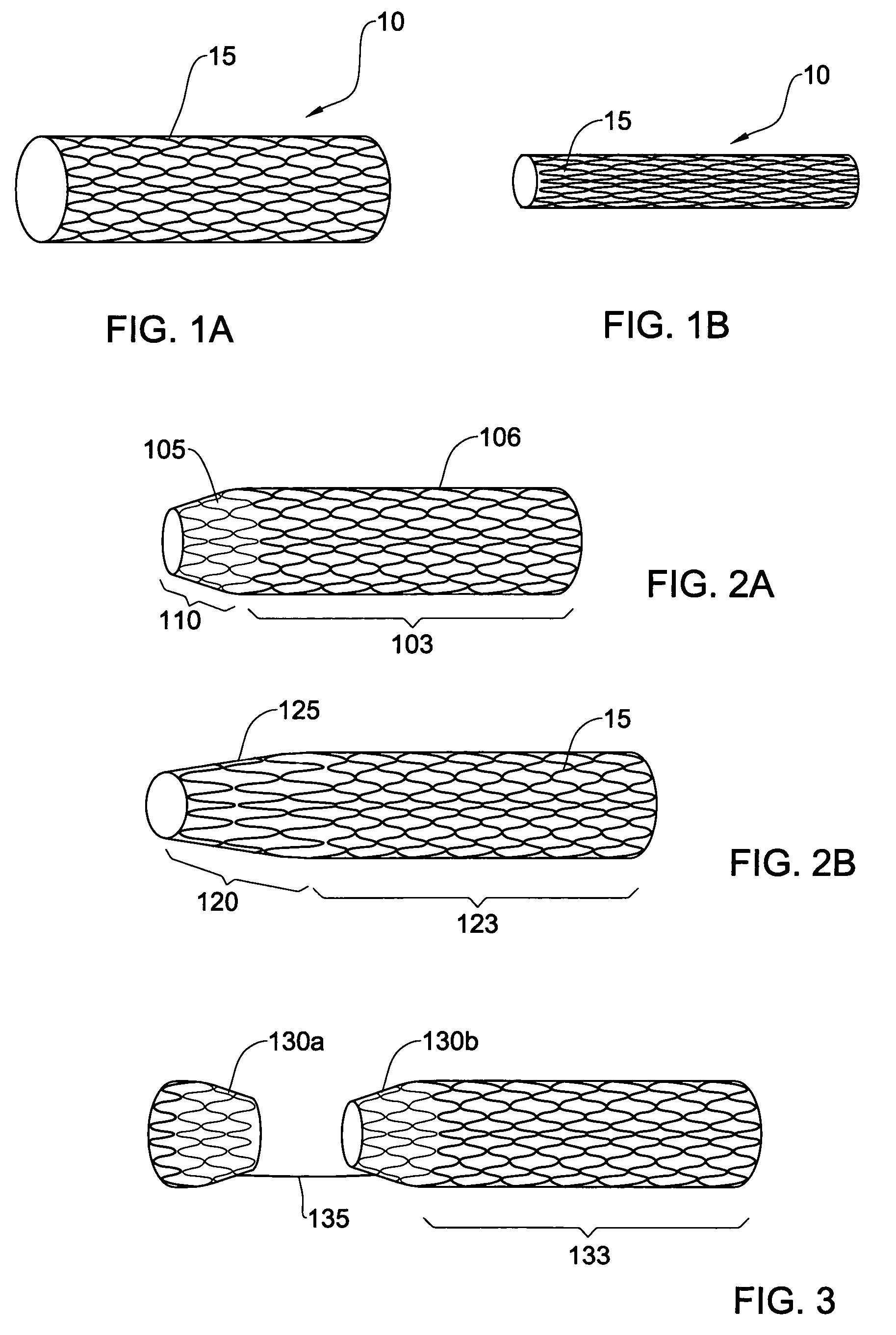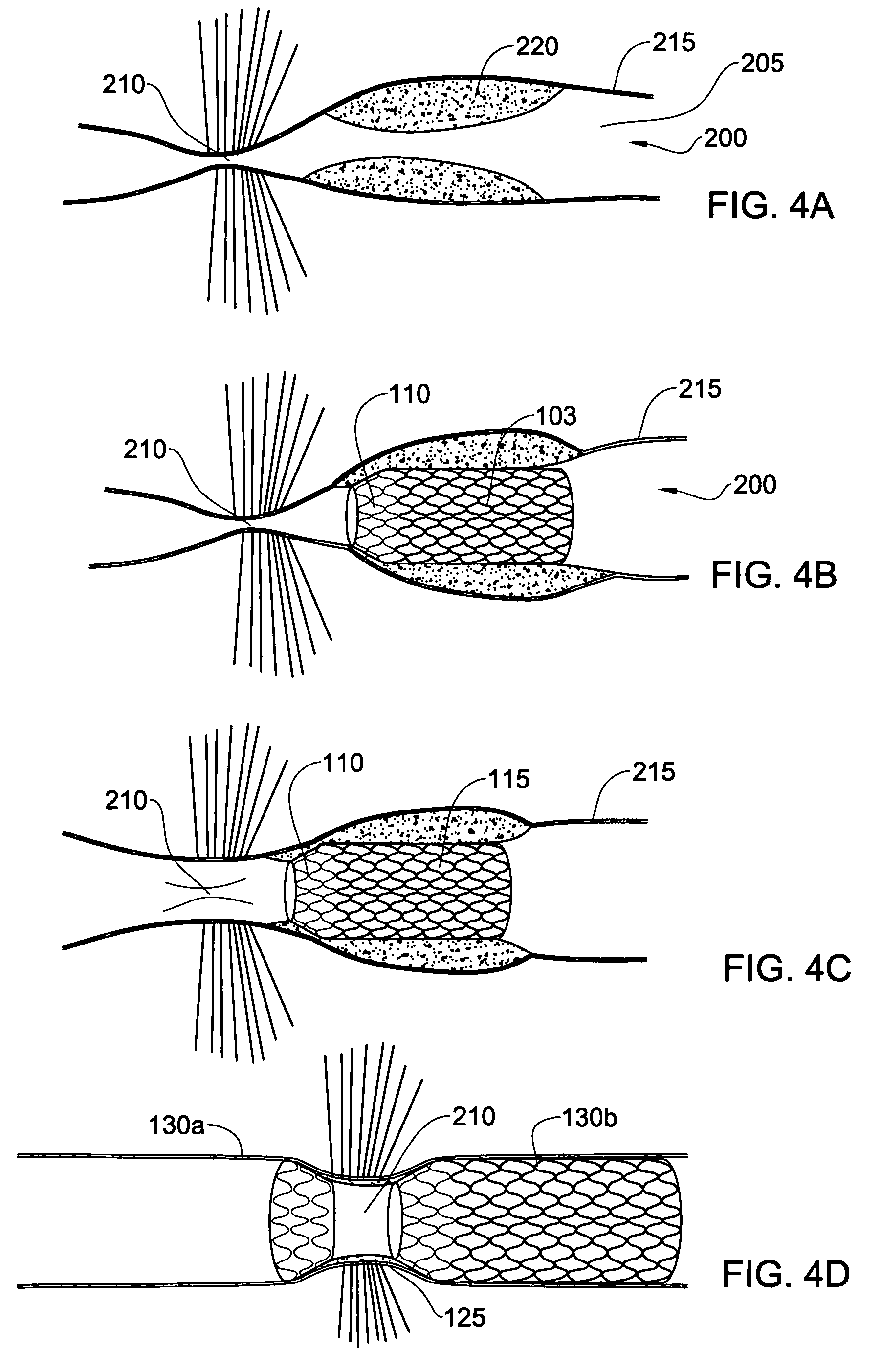Endoluminal lining
- Summary
- Abstract
- Description
- Claims
- Application Information
AI Technical Summary
Benefits of technology
Problems solved by technology
Method used
Image
Examples
Embodiment Construction
[0029]FIG. 1a shows a lining in accordance with one embodiment of the invention. The lining, generally indicated by 10, is formed from a resilient filament 15 that has been fashioned into an undulating helix. The filament may be made of spring steel, a super-elastic shape memory alloy such as Nitinol, or a shape memory alloy. The lining is shown in FIG. 1a in its unstrained conformation. When a radially inward force is applied to the lining 10, the lining 10 constricts while maintaining its generally cylindrical shape, as shown in FIG. 1b. As the lining 10 constricts, the surface density of the filament 15 in the wall of the lining 10 increases. Due to the resilient nature of the filament 15, when the radially inward forces are removed from the lining, the lining returns from the small caliber configuration shown in FIG. 1b to its large, unstrained caliber shown in FIG. 1a.
[0030]The lining 10 is dimensioned so as to have an unstrained large caliber that is slightly larger than the ...
PUM
 Login to View More
Login to View More Abstract
Description
Claims
Application Information
 Login to View More
Login to View More - Generate Ideas
- Intellectual Property
- Life Sciences
- Materials
- Tech Scout
- Unparalleled Data Quality
- Higher Quality Content
- 60% Fewer Hallucinations
Browse by: Latest US Patents, China's latest patents, Technical Efficacy Thesaurus, Application Domain, Technology Topic, Popular Technical Reports.
© 2025 PatSnap. All rights reserved.Legal|Privacy policy|Modern Slavery Act Transparency Statement|Sitemap|About US| Contact US: help@patsnap.com



